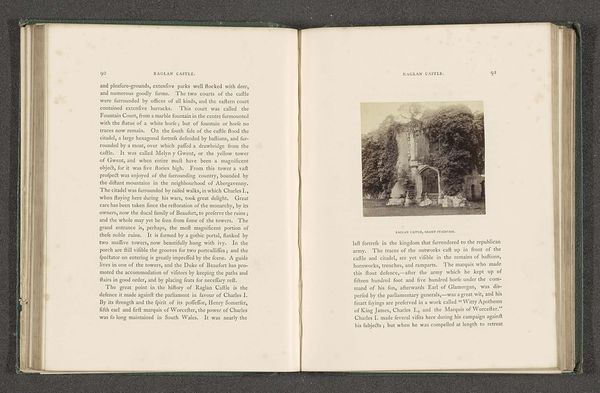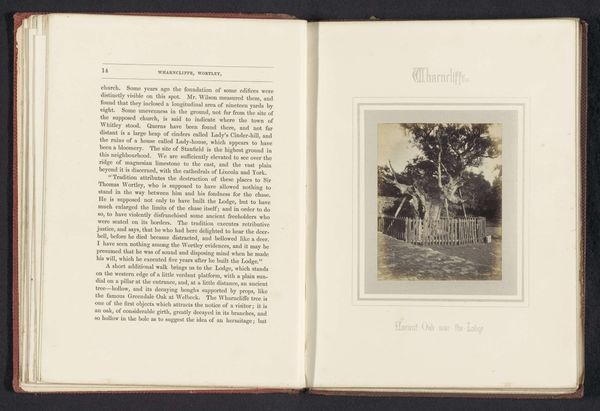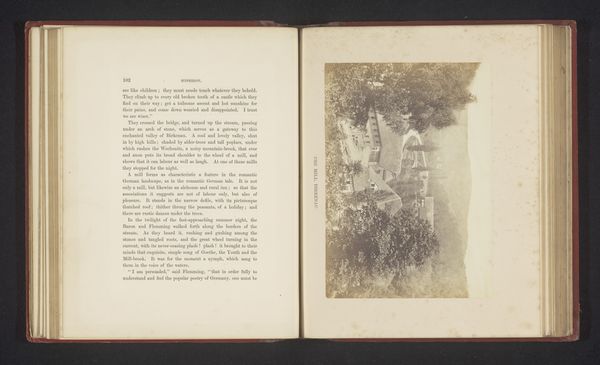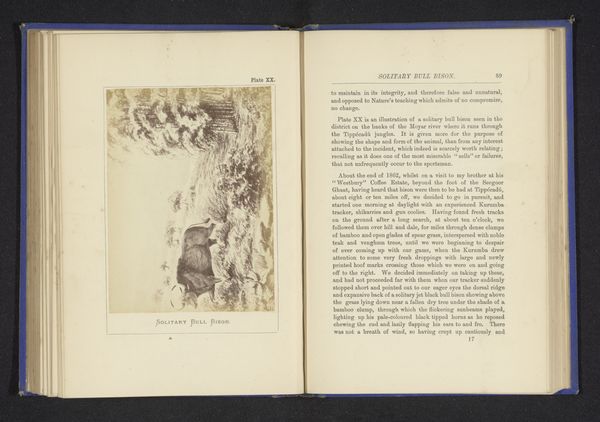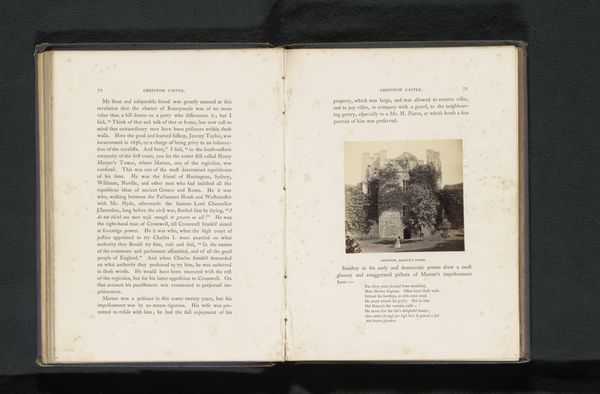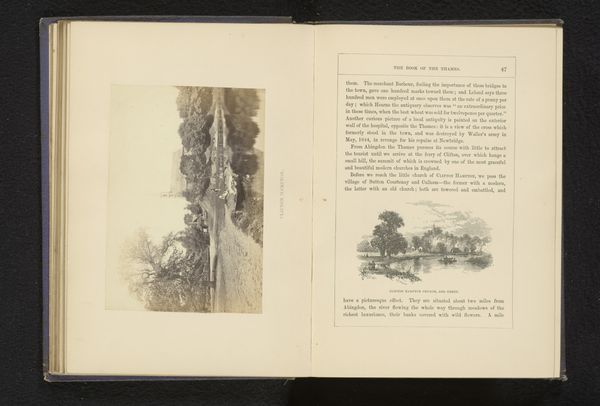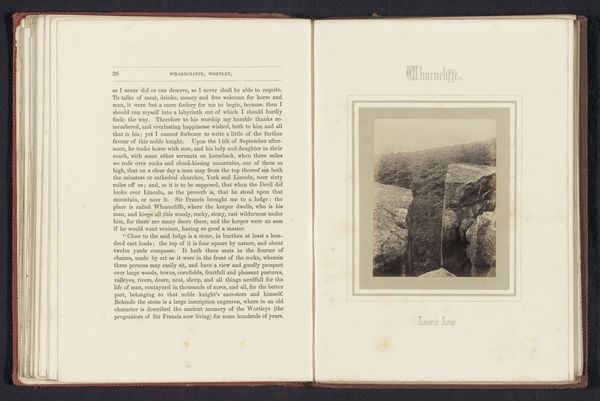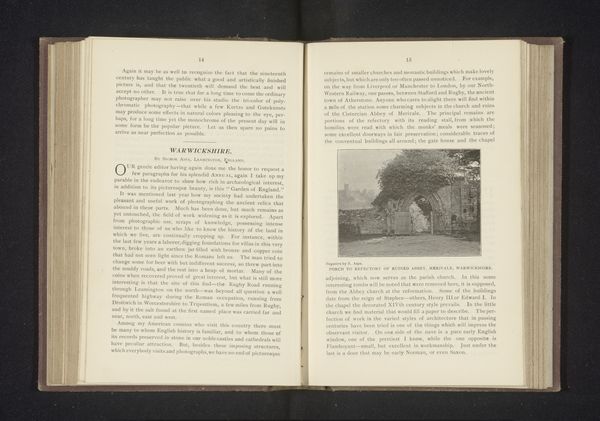
print, photography, albumen-print, architecture
#
script typeface
#
aged paper
#
medieval
#
script typography
# print
#
editorial typography
#
landscape
#
house
#
photography
#
stylized text
#
thick font
#
history-painting
#
handwritten font
#
classical type
#
thin font
#
albumen-print
#
architecture
#
historical font
Dimensions: height 113 mm, width 80 mm
Copyright: Rijks Museum: Open Domain
Editor: So, here we have a page from an album featuring an albumen print, "Birth Chamber of William the Conqueror, in the Château de Falaise," dating from before 1865 by Joseph Cundall. It feels quite melancholic, depicting these decaying ruins, yet there's a human figure adding a strange sense of scale. How do you interpret this work in its historical context? Curator: It’s important to recognize how this image participates in the 19th-century’s construction of the medieval past. Think about the rise of historical societies and romantic nationalism during this era. This image, of a site tied to William the Conqueror, isn’t just about documenting architecture, but evoking a potent narrative of origins. To what extent do you see this photograph working as an objective record versus a romanticized portrayal of history? Editor: That's interesting! I hadn’t considered the nationalistic aspect. It feels less like objective documentation and more about myth-making. Is there a sense of visual rhetoric at play in how ruins were presented at that time? Curator: Precisely. Ruins often functioned as symbols of national identity, valorizing a distant, often idealized, past. Photographers, knowingly or unknowingly, framed these sites in ways that served ideological purposes. Note the light, the framing, and how it emphasizes decay. What does that communicate? Editor: The way you point that out really does suggest an intention behind the composition, guiding the viewer towards a feeling of faded glory. So much meaning can be embedded within seemingly objective records! Curator: Exactly. Reflect on what this reveals about the selective construction of history itself. It's all so performative. Editor: It truly underscores how historical narratives get visually curated.
Comments
No comments
Be the first to comment and join the conversation on the ultimate creative platform.
